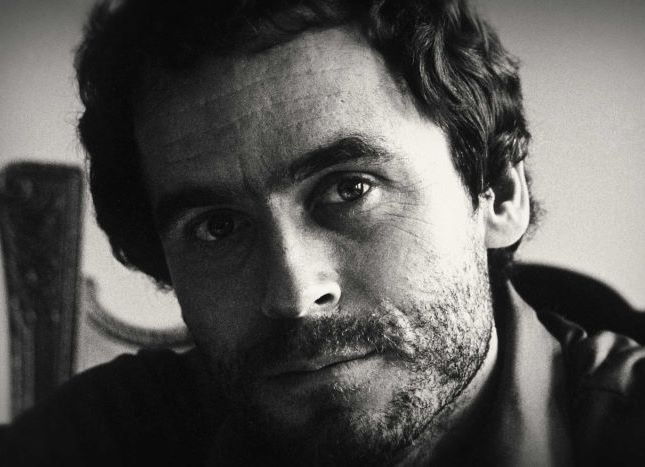Just this weekend, I taught a self-defense course for teenage girls ages 17-18. It was set up after the recent murder of Julie Van Espen here in Belgium, which sparked outrage and shock throughout the population. A concerned parent went beyond just that and did what most people don’t do: he took action. Through a mutual friend, he got in touch with me and we discussed the course before setting it up. I talked about how prevention and avoidance is at the heart of it and how the girls shouldn’t expect to be bad-ass Wonder Woman warriors at the end of it. He understood and communicated this clearly to the parents of all the participants.
During the course, I had to burst some bubbles about self-defense and what it means to keep yourself safe. This happens every time I teach a new group, as most people have a very distorted view of the realities of violence. To be clear, this is through no fault of their own. We simply live in historically unprecedented low levels of violence for a large portion of the population: it’s been 75 years since the last war over here, which hasn’t happened in at least a millennium. In daily life, most people are also not confronted with violence. It just isn’t a part of their lives. So it’s no wonder they have erroneous information and opinions on it.
It’s my job to punch a hole in those myths and try to recalibrate their world view.
There are many aspects to doing that in a way one that actually gets results instead of resistance. That is also difficult, at best, as it encompasses lots of information. For example:
Most (unfortunately, not all) teenage girls have not yet experienced what it is like to have an adult male use his full strength against them.
Even if they have fought with boys before, those kinds of conflicts rarely escalate to that point. What’s more, an adult male is at a different strength level than a teenage boy, and it is a completely different experience when facing the one instead of the other. For instance, an adult man has on average 70% more upper body strength and 50% lower body strength. Those numbers should give you pause as a woman/girl, but experiencing it is a whole other dimension of understanding.
To get them startedon that path, I show them the video of a man viciously attacking two young women, striking them like he would another man. Then I take the most athletic girl in the group in a (gentle) bear hug and lock my arms so there is no more give in them. Then she can do whatever she wants to break free.
She never does.
I am above average strong and have experience handling people who don’t want to be handled. In this case, the girl increasingly realized she was stuck and at my mercy and began to feel uncomfortable. Which is when I immediately let her go. I obviously made sure I didn’t hurt her, nor let her hurt herself trying to get out.
Then I repeated my point that as a woman, fighting head-on against a man is generally a losing proposition. The odds are against you as there are factors beyond your control that put you at a distinct disadvantage. Once the girls finished expressing their “that’s not fair!” outrage, I explained that this is why the prevention and avoidance techniques I spent most of the course teaching and roleplaying with them are so important: If you can avoid a fight in which you have terrible odds, then that’s a win. You only fight when you have no other choice. But when you do, you do so with all you’ve got because you know just how much trouble you’re in.
As an aside, the smallest girl of the group understood that just fine. She hit the pads with ferocity and had no problem simulating deep eye gouges while wrenching the attacker’s neck. Though her stature makes her more of a target, she has the right mindset when it comes to defending herself…
As another aside, if you have teenage girls or young women you want to keep safe, give them my podcast episode on Self-defense tips for young women

Another example, and the point of this post:
The murder of Julie Van Espen is at the extreme end of the violence scale and is not the norm. Teenage girls are more likely to face other acts of violence, but a stone-cold killer is more horrifying than those. So it is natural to focus on that specific danger and ignore the other kinds that are more of a direct threat. I explained the statistics of violence and how unlikely they are to become the victim of such an extreme crime. Obviously, they should not ignore the possibility, but there are more common threats and prevention is the best approach in all cases.
What I didn’t talk about is the part I’ll mention here, as that’s a message for adults:
You’re around killers more than you might think, but it’s easier to pretend you’re not.
I’ll talk a bit more, in a minute. First, watch this 5min. video:
Dr. Peterson makes several interesting points, but I’ll focus on the first one:
A killer can look like anybody: you, me, your friendly neighbor, anybody.
Show people this face and ask if they see a killer in him. Many people will answer in the affirmative:

In the case of Jamie Osuna, they’re not wrong.
Then show them the picture of this handsome man, and the number of negative answers will be significant:

Ted Bundy had tons of women doting over him, all the way up to his death sentence, and this despite having confessed to murdering at least 30 girls and young women.
Here’s the thing:
Nobody wants to look at a person they find attractive and think they’re a sadistic killer.
We humans have an uncanny ability to deceive ourselves and sometimes go through wild mental gymnastics to justify our opinions and actions. The stories we tell ourselves to more easily go through life are numerous, but I want to focus on this one:
I am safe.
There is no danger.
This man next to me can’t be a killer.
He doesn’t even look like a killer…
We tell ourselves these stories because looking at every person you meet as a potential killer makes living in our modern world impossible. You’d have to act upon every perceived threat and pretty much never leave your house. So we don’t think like that. What’s more, we tend to go into the opposite direction and assume most people aren’t killers and therefore offer no threat. Which is an accurate statement already, but ir paves the way to easily slide into the next step of that logical fallacy:
The odds of that person being a killer are so low, I might as well not stop and think too much about the possibility. After all, you can’t worry about everything.
This last step directly leads to complacency when it comes to personal security and self-defense.
Just because somebody isn’t a killer doesn’t mean he can’t be dangerous. Getting beaten to a bloody pulp (see the video of the guy and two women above) is not as bad as dying, I guess, but it isn’t a picnic either.
Conclusion
An important part of self-defense is prioritizing and accepting risks that are inevitable. Living on this planet is risky by default. You do what you can to avoid everything nature has to offer that can wipe you out, but you know there is always a possibility for disaster to strike. Self-defense should be the same: do your best to avoid danger, but keep on living your life to the fullest despite knowing it is impossible to avoid everything.
That means being realistic and making it a priority to prevent the most common dangers, while not falling into the trap of on purpose ignoring the possibility of extreme violence coming your way. No matter how unfomcortable that thought makes you feel.
Speaking of uncomfortable thoughts…
Here’s another lie we tell ourselves:
I’m not a killer.
I can’t be one.
I’m not like him.
Dr. Peterson’s exercise of thinking through what it would take for him to become a killer is useful for several reasons, even though it is not pleasant to go through this process. The one relevant to this article is this:
If you can figure out the reasons that would take you across that Rubicon, you just might have a better chance at spotting them in somebody else.
That somebody who can look just like anybody, including you.


Leave a Reply